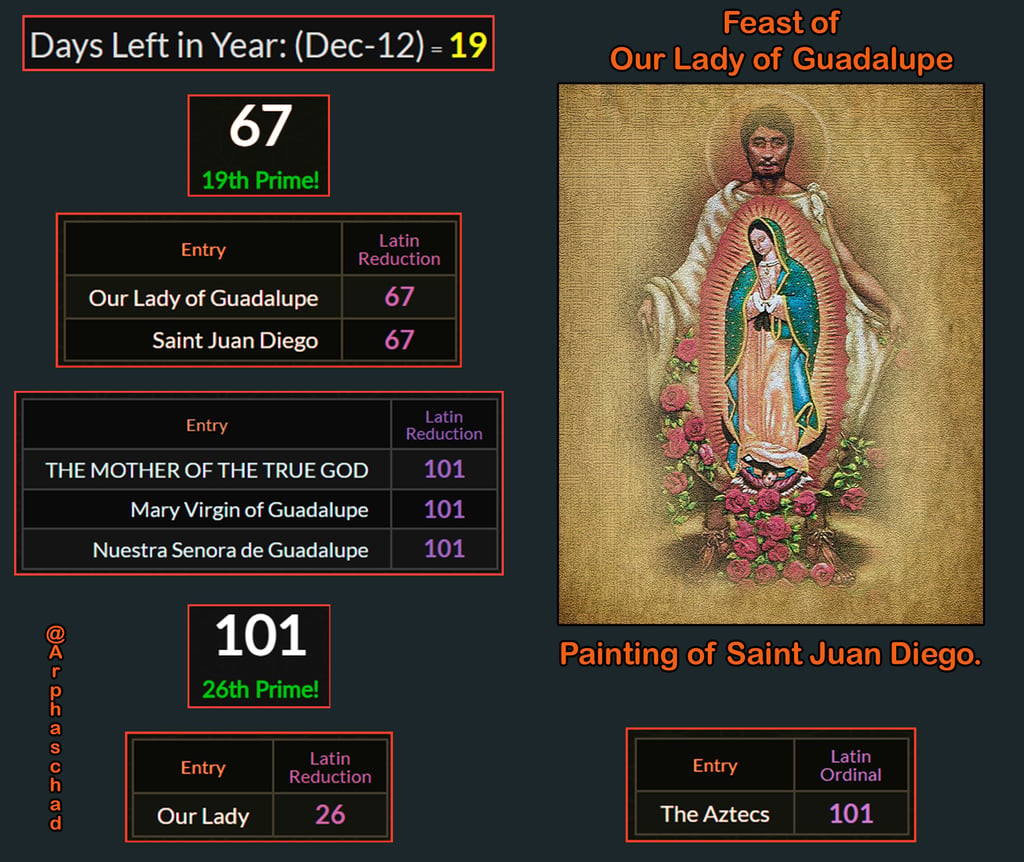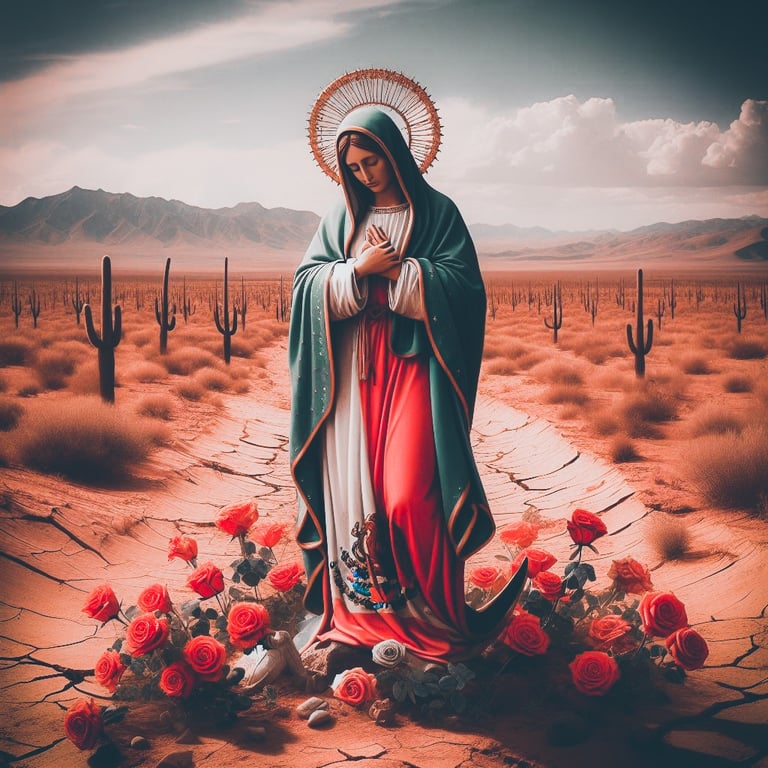The Conquest of the Aztecs in Mexico and the Miraculous Appearance of Our Lady of Guadalupe
Our Lady of Guadalupe brings Christ to Mexico
Arphaschad
12/10/20234 min read

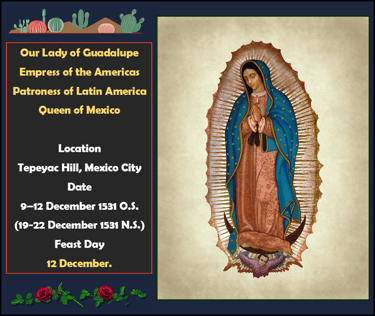
The conquest of the Aztecs in Mexico marked a significant turning point in the history of the region. It was during this time that the Spanish conquistadors, led by Hernán Cortés, arrived in the New World and encountered the powerful Aztec Empire. However, amidst the violence and turmoil of the conquest, a remarkable event occurred that would forever shape the religious and cultural landscape of Mexico: the miraculous appearance of Our Lady of Guadalupe.
She is also called the Virgin of Guadalupe or in Spanish Virgen de Guadalupe
In 1521, after a long and arduous battle, the Spanish forces, with the help of indigenous allies, successfully defeated the Aztec Empire. This conquest brought about radical changes in the social, political, and religious fabric of the region. The Aztec civilization, with its rich cultural heritage and advanced societal structures, was replaced by Spanish colonial rule.
It was in the midst of this turbulent period that the Virgin Mary, under the title of Our Lady of Guadalupe, appeared to a humble indigenous man named Juan Diego. According to the accounts, on December 9, 1531, Juan Diego witnessed a vision of a radiant woman on Tepeyac Hill, near present-day Mexico City.
Our Lady of Guadalupe spoke to Juan Diego in his native Nahuatl language, expressing her desire for a church to be built on the site of her appearance. She told him she was
"The Mother of the True God".
She also left behind an image of herself imprinted on Juan Diego's cloak, known as a tilma. This image, which still exists today, is considered one of the most important religious relics in Mexico.
The appearance of Our Lady of Guadalupe had a profound impact on the indigenous population, who saw in her a connection between their ancient beliefs and the newly introduced Catholic faith. The image of the Virgin Mary, portrayed as a mestiza woman, resonated deeply with the mixed-race population of Mexico, bridging the gap between the Spanish conquerors and the indigenous people.
Over the centuries, devotion to Our Lady of Guadalupe spread throughout Mexico and beyond, becoming a cornerstone of Mexican identity and a symbol of unity. The Basilica of Our Lady of Guadalupe, built on the site of the apparition, is now one of the most visited Catholic pilgrimage sites in the world.
The story of Our Lady of Guadalupe embodies the complex and multifaceted nature of the conquest of the Aztecs in Mexico. It represents a blending of cultures, a fusion of religious beliefs, and a testament to the resilience of the indigenous people in the face of colonization.
Today, Our Lady of Guadalupe continues to be venerated as the patroness of the Americas and a source of comfort and inspiration for millions of people. Her image serves as a reminder of the enduring power of faith and the enduring legacy of the Aztec civilization.
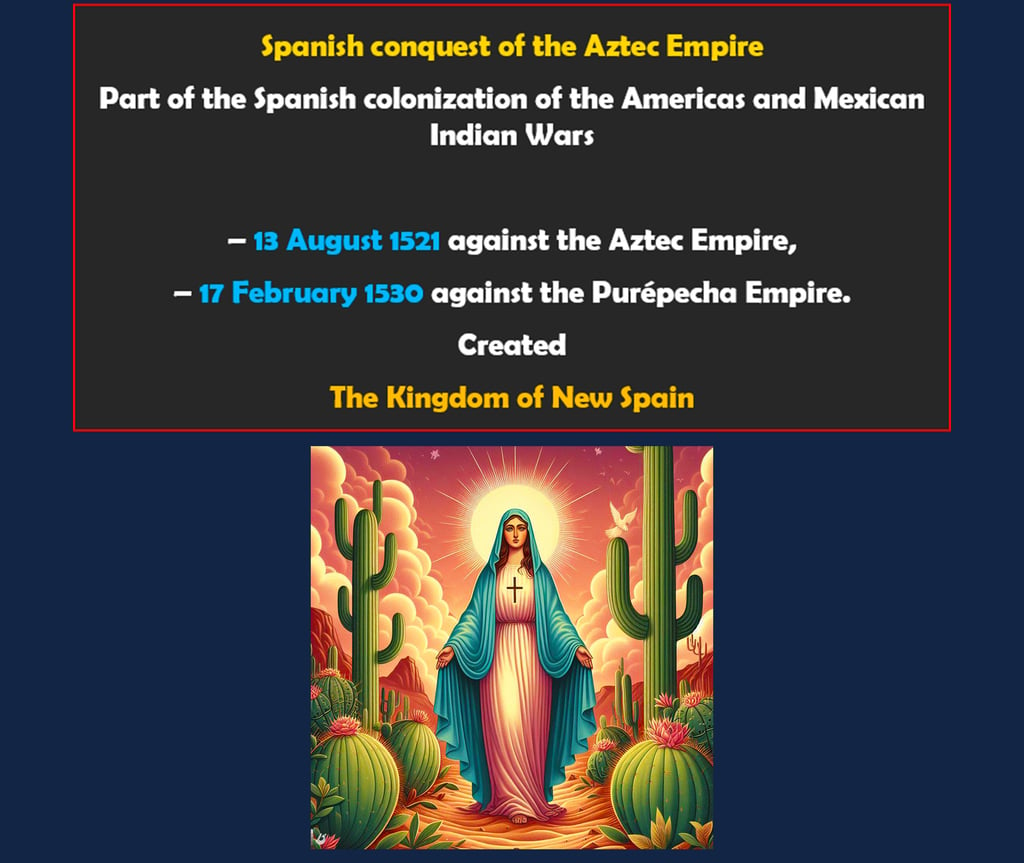


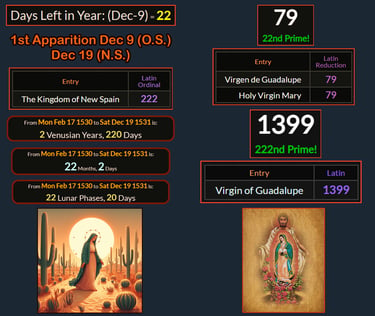
Luke 2:19–2:22 (D-R)
19 But Mary kept all these words, pondering them in her heart.
20 And the shepherds returned, glorifying and praising God for all the things they had heard and seen, as it was told unto them.
21 And after eight days were accomplished, that the child should be circumcised, his name was called JESUS, which was called by the angel before he was conceived in the womb.
22 And after the days of her purification, according to the law of Moses, were accomplished, they carried him to Jerusalem, to present him to the Lord:
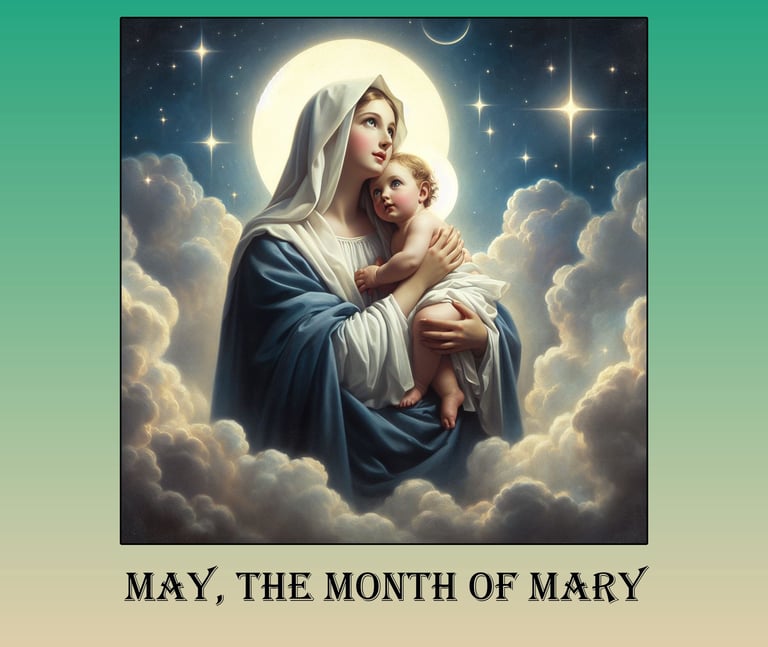



Dec 9 is 1 Day after the
Immaculate Conception of Mary


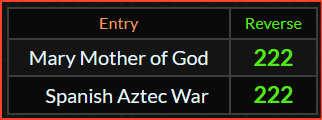


1 + 3 + 9 + 9 = 22
1 x 3 x 9 x 9 = 243.


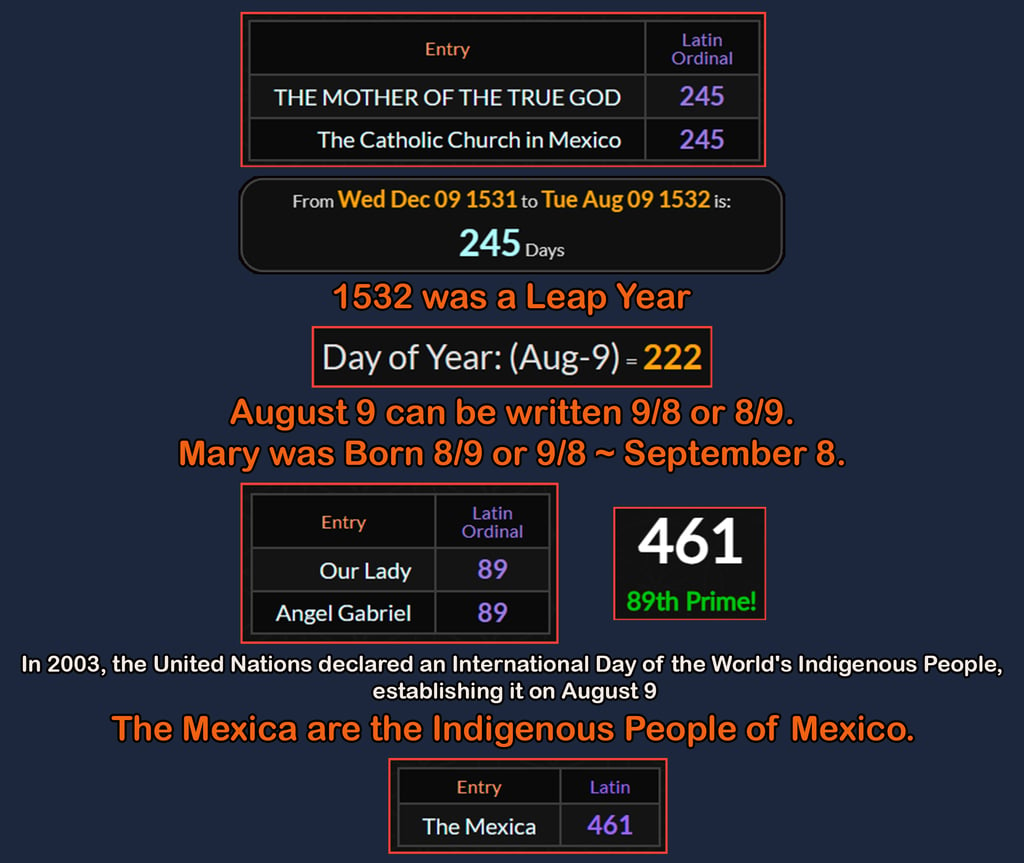

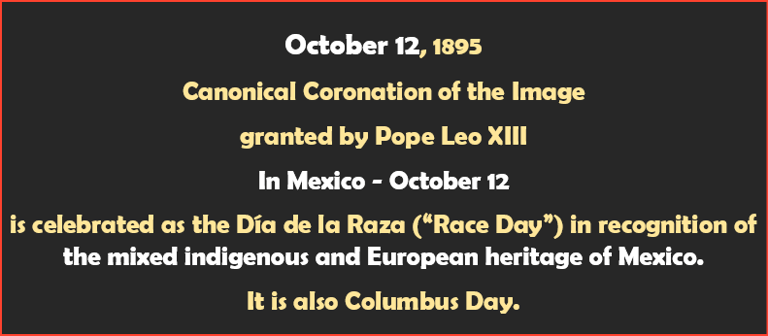





Our Lady of Guadalupe Feast Day
December 12.
